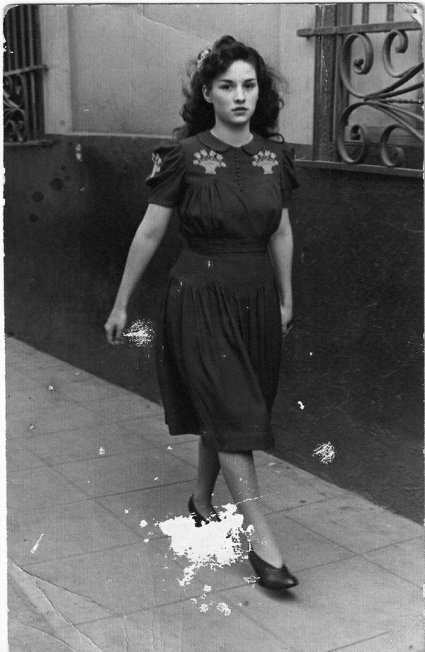Occupy Wall St. Zine Assignment
Posted
|
Views: 1,016
Add some text, Yo! Click this text box to change the text, style, color and fonts.


Occupy Wall Street: A New Playbook for Revolution
Hunter Anderson - Professor Grubbs - COMM4064
Zine Assignment - April 22nd, 2016
_______________________________________________________________________________________________________________________

______________________________________________________________________________________________________________________

______________________

.















Add some text, Yo! Click this text box to change the text, style, color and fonts.
Add some text, Yo! Click this text box to change the text, style, color and fonts.
Add some text, Yo! Click this text box to change the text, style, color and fonts.
Add some text, Yo! Click this text box to change the text, style, color and fonts.
Add some text, Yo! Click this text box to change the text, style, color and fonts.
Add some text, Yo! Click this text box to change the text, style, color and fonts.
Add some text, Yo! Click this text box to change the text, style, color and fonts.
Add some text, Yo! Click this text box to change the text, style, color and fonts.
Add some text, Yo! Click this text box to change the text, style, color and fonts.
Add some text, Yo! Click this text box to change the text, style, color and fonts.
Add some text, Yo! Click this text box to change the text, style, color and fonts.
Add some text, Yo! Click this text box to change the text, style, color and fonts.
Add some text, Yo! Click this text box to change the text, style, color and fonts.
Add some text, Yo! Click this text box to change the text, style, color and fonts.
Add some text, Yo! Click this text box to change the text, style, color and fonts.
Add some text, Yo! Click this text box to change the text, style, color and fonts.
Introduction
I first developed an interest in Occupy Wall Street because I have always been fascinated with the culture of both Wall St. and American Political arenas, so naturally I wanted to look further into the issue. I have done previous works on movements, like the Tea Party and the Arab spring, and wanted to see if the Occupy Wall Street movement followed the same trends that the other movements had. This trend was a slow progression away from economic issues (but not dismissing those issues all together), and towards controversial social issues. I quickly discovered that whether you agree or disagree with their stances politically, Occupy Wall Street is a fascinating movement to look at. Doing a project on a movement that is currently happening and growing and changing, even while I write this was, difficult and exciting at the same time. I had already seen some of the news coverage when the movement first began back in 2011 before deciding on this topic, and wasn’t sure if it was going to be current enough to work with. Luckily the movement had progressed faster and farther than I could have imagined, allowing me the proper resources to conduct thorough research.
In the rest of this series of short essays, I will refer to Occupy Wall Street as just “the Occupy movement” or "OWS." A central message and core value of the movement is unity of all people involved, and I feel that addressing the movement as a whole will better portray the archive materials. While I do use materials from all different cities, the word occupy has become a, sort of, trademark, for these protests, and a new synonym for resistance. The word “Occupy” acts as a unifier within the movement, and will help me be inclusive, as the Occupy movement stresses, in the rest of my project.
Table of Contents
$4,222,016.01
The Occupation
The constriction of access to public space was reinforced by a trend to privatize public spaces. Zucotti Park was a product of this. It was a privately owned space presented as available for public traffic. But the space appeared as a park because a private developer had accepted responsibility to offer it for conditional public use in return for the right to erect private buildings with non-public space in excess of what zoning laws would otherwise have allowed. This happened alongside a reduction in completely available public spaces in lower Manhattan, and gave added symbolism to the occupation. For OWS, as for many of its counterpart movements around the world, the right to public space was a crucial claim. It was part of a broader and even more basic cluster of claims: to be represented, to be considered in decisions, to participate, in short to be the public. Participants in these protests made the point that the public should not be identified with the state but with the people. They claimed legitimacy as a representation of the people – at large and assembled.
Occupation also offered a tactical advantage by providing a de facto centre to a mobilization that sometimes denied having centres. OWS famously refused to authorize a set of leaders or state a political programme as desired by reporters and many others. It was not the product of a single organizational structure; it made an effort to manage its affairs by radical consensus and endless discussion. This was facilitated by being in the Square itself. Occupation gave the movement a more cohesive identity than the diverse ideologies of its members could do, including not least a visual identity to outsiders. It made a meaningful project of the simple negotiation of everyday decisions. It was also in the Square and as a byproduct of material conditions that some of the mobilization's most memorable innovations took place. The ‘human megaphone’ for example was a response to the desire for a large number of people to carry on a discussion in a noisy place. They were deprived of the use of electronic amplification by a decision of the police and city government. But having each statement amplified by repetition in a wave that carried it outward from the centre (or sometimes in reverse from the fringe to the centre) made ordinary statements into ritual performances.
$4,222,016.05
In each of these countries, occupation of prominent public spaces was a central dimension of activism. Syntagma Square and Plaza del Sol quickly became globally familiar names; images of rallies circulated quickly. As in New York, protesters came with different analyses and ideologies, passions and emphases. Some were anarchists, some came from more conventionally Left political parties. Some were participants in efforts to build a new economy through cooperatives, barter, and alternative currencies. Some were employees of corporations shedding jobs. Some were students facing the future fearful there would be no jobs. Increasingly often they were national citizens angry at severe sanctions imposed not only by their governments but also by global markets, the EU, and in particular its most powerful member, Germany. They were united by a sense of indignation – both in the sense that they were indignantly angry and in the sense that they were being treated with little of the dignity owed to citizens.(2)
That there was a world-wide wave of protests gave added weight and significance to each. Visual media shared images of urban occupations that brought inspiration and circulated tactical ideas. Even before this it is worth noting the prominence of Canadian activists in helping to start OWS. And it is crucial to see the background – of organizations, networks, and ideas – provided by years of mobilization against corporate-dominated forms of globalization. OWS did not spring into being spontaneously. It was made possible by a ‘prehistory’ that included the World Social Forum as well as a variety of domestic US campaigns. The story of OWS thus needs to be seen as international, not only interior to the US. "This is partly a matter of parallels and similarities, partly a matter of more direct influences, and very much of a pattern of visual images. Indeed, these stretch back before Tahrir to Beijing in 1989 and Prague in 1968 among other instances of transformative popular mobilization in prominent public squares"(1) says Craig Calhoun of the London School of Economics.
International Wave of Mobilization
The Occupation
$4,222,016.04
The assembly of citizens is at the centre of many protest movements. Crowds stand in for ‘the people’ at large. But in Zucotti Park as around the world, occupation was an especially resonant symbolic tactic. It turns the stranger sociability of the crowd into an organized, located, and more enduring voice of the people. Occupation is a medium of action, and at the same time a desired state of being. It manifests ‘the people’ or ‘the citizens’ occupying the public sphere. And for ordinary citizens to claim public spaces in protest is among other things to upset the usual symbolic control of those spaces by government and ‘forces of order’. This is a particularly salient symbolism in contexts where access to public space is inhibited or controlled. This was manifestly an issue in Mubarak's Egypt, for example, as security forces used violence to try to prevent all manner of public mobilization. But it was also an issue in New York and London, where increasing surveillance had been deployed in public spaces and where policing of protests had often appeared to deny citizens the right to public demonstrations or at least to sharply restrict their use of public space for such demonstrations.
$4,222,016.03
$4,222,016.02
Page #'s listed in the lower right-hand corner of each page to the right of the decimal:
1: Introduction
3-4: International Wave of Mobilization
5-6: The Occupation
7-8: Occupation & the Law
9: OWS: Dramatic Performance > Movement
10-11: A Gendered Occupation
12-13: The Muse of Occupation
14-15: OWS Art Gallery
16-17: Occupation and Protest: a mobile idea
18: Zine How-To guide
19: Conclusion & Reflection
20: Works Cited
The 2008 financial crisis stunned people but initially brought little protest. Financial institutions had reaped fantastic profits. Their executives had been paid fantastic bonuses. And when the financial house of cards they devised tumbled, governments stepped in to bail them out with public money. Some firms used the public funds to pay another round of enormous bonuses even while many ordinary Americans lost their jobs or their homes or were threatened with layoffs and foreclosures. There were certainly howls of unhappiness, Republicans and Democrats sniped at each other over who had the better response, but there was little in the way of concerted collective action.
People poured into streets in protest and began symbolic occupations of public squares – but not immediately after the initial crisis and not in New York. Rather, this mobilization began in Europe. Initially continental Europeans had regarded the financial crisis as an American, or perhaps Anglo–American matter. In Britain, the sight of lines outside collapsing banks brought alarm. Government efforts to manage the crisis brought controversy. But there was little immediate organized protest. This began only in 2010 as the crisis spread to Greece, Spain, Portugal and other parts of the Eurozone.(Calhoun)
$4,222,016.08
$4,222,016.09
In OWS, preference for lateral networking over hierarchical organization joined with commitment to a notion of democracy as including not prioritizing – making sure the issues and values of all were heard and refusing to rank these in some order or greater and lesser importance. This emphasized one dimension of democratic legitimacy, that all the citizens count equally. But it did so in a way that made for challenges in building an enduring, effective movement, especially on a large scale.
This orientation also led to some immediate practical problems for OWS. The spread of self-declared extensions of OWS at distances from Wall Street produced different occupations claiming equal right to speak for the larger whole – and speaking differently. Some of these chose tactics at odds with efforts to appeal for broader support. In Seattle, for example, the Occupy protestors decided that a good tactic would be to shut down the port. They made this decision unilaterally. That is, it was democratic – but only among those who happened to be inside their meetings on the relevant days or nights. It was a decision that amounted to an attack on the livelihoods of all the workers in the port – workers already suffering since the financial crisis. Whether from enthusiasm for their own internal democracy, or intoxication with the idea that they represented ‘the people’, or their distaste for formal organizations, the Seattle occupiers did not see a need to try to reach common cause with the trade unions representing the port workers. And thus not surprisingly, the Maritime unions – which in Seattle have a strong tradition of left politics and critical analysis as well as labor militancy – all opposed the occupation plan. This de-regulation ,if you will, led to increased controversy.
OWS: Dramatic Performance > Movement
Occupation & the Law
(3)
Occupation & the Law: A Visualization
In the case of OWS – as in many others – police response helped to make the protest flourish and make it visible to a broader range of citizens and indeed the world. One assumes that police do not do this intentionally. It is hard to believe that they are secret supporters of protest movements who engage in harsh tactics only to provide symbolic demonstrations of the clash between order enforced by violence and the peaceful expression of citizens. Yet it is very often the case that police efforts to control or disperse crowds provide some of the most influential visual images in protest mobilizations. It is of renewed importance in an era when such events are played out before cameras and images circulated instantly by both broadcast and social media. (Schapiro et al.)
Occupations also had a tendency to drive a wedge between the protesters and liberals who were sympathetic to many of the mobilization's messages. They created sanitary problems, potential health and safety issues, and traffic problems. They made mayors and university presidents into enforcers of order. Many of these may have made the wrong call when they decided to evict occupations. In some cases, as at Harvard, this was done in a very early and preemptive fashion, not as a response to any manifest problem. This perhaps dramatized the difficult position of university presidents, whether personally liberal or not, as they have to manage multiple contending forces: students of different views, members of boards of trustees, donors. Mayors faced even more acute versions of this problem. They are responsible for the smooth functioning of urban systems like traffic and waste removal. They have diverse constituents. And so occupations of public spaces are a very immediate and practical challenge. In New York Mayor Bloomberg certainly had other options than to join in the decision to end the occupation of Zucotti Park. But around the country it was most commonly liberal mayors, black mayors, progressive mayors who found themselves trying to negotiate an end to the occupation and resorting to police force when this proved impossible.
$4,222,016.07
$4,222,016.06
After eviction from their camp in lower Manhattan, the organisers of Occupy Wall Street struggled to maintain order at the general assembly, the backbone of its decision-making process. At its heart was an "ongoing crisis for people of colour, women and the marginalised", according to Kanene Holder, a part-time teaching artist from Brooklyn who is active on several working groups. "White males are used to speaking and running things," said Holder as she talked to The Guardian. "You can't expect them to abdicate the power they have just because they are in this movement." One of the defining features of the leaderless Occupy movement – aside from the occupation itself – has been its horizontal decision-making in the form of its Arab spring-inspired general assembly. The simple idea behind it: that everyone has a voice. But a quick glance through the paper, television and web coverage spawned since Occupy's first march on Wall Street in September, 2011, reveals that some voices are louder than others. While images of women as victims have fostered, those who speak about the ideas and actions have been predominantly male. Yet women are everywhere in Occupy, of a ratio more in keeping with the 51% they represent in society at large than mainstream political parties or indeed Congress, where female representation is at a miniscule 17%. Those who spoke to the Guardian talked about a daily struggle to maintain their presence and ensure they were heard. Various ideas designed to redress the balance – such as "progressive stacks", where minority voices are given priority to speak, and "caucuses", where decisions deemed inappropriate to women, people of color and the LGBT community are blocked – were not enough, they said. This inequality has been reinforced by several publications of videos which focus on the "Hot Chicks" of the OWS movement.
Art certainly emerged as a major vehicle for expressing the Occupy Wall Street movement during its tenure in New York City. Street art from OWS and Occupy D.C. has been collected by the Smithsonian National Museum of American History, while the movement's Arts and Culture Committee showcased spoken word performances and poetry readings from Manhattan's Zuccotti Park at the Metropolitan Museum of Art.
During the occupation, a group known as Occupy Museums demonstrated at New York's Museum of Modern Art, the Frick Collection and the New Museum protesting the corporatization of art, and the "No Comment" pop-up exhibition similarly represented itself as art inspired by the movement. Then there's the sudden popularity of anti-establishment Guy Fawkes masks, distant kin to the masked protests of the Guerrilla Girls, a collective of anonymous artists who wear Gorilla masks to protest sexism. But perhaps most provocatively, Shepard Fairey -- the artist who famously created the Obama "Hope" poster -- contributed "You Are Invited to the Occupation Party," featuring a portrait of a woman evocative of the black power movement, and placing Occupy Wall Street within a deeper history of civil rights protest. Occupy art might just be the movement's most politically potent tool in its dramatic reframing of the racial dynamics of a populist uprising frequently characterized as largely white and "hippie." Fairey's "You Are Invited" is an especially compelling example. It offers an image of a young black woman wearing a turtleneck sweater and iconic Afro, a la Angela Davis -- the "uniform" of the Black Panther Party of the 1960s and '70s. The poster's retro look recalls a militant past, almost counter-productive to the ideologies of the occupy movement, and surely is meant as a challenge to the idea that as a society we are anywhere near "post-race" enlightenment.
The Muse of Occupation
$4,222,016.11
A Gendered Occupation
$4,222,016.10
A Gendered Occupation
Berlin (Taylor, 2011)
International Wave of Mobilization
$4,222,016.13
For evidence of this, we need look no further than the grossly disproportionate use of force by Oakland city police in clearing peaceful Occupy protesters in 2011. Comedian and social critic Jon Stewart said on his late-night show that “the only threat that could possibly warrant such a police response was Godzilla”. (Cherette) His comment, though humorous, was spot-on, for the "beast" perceived as a threat in that city has long been its black and brown citizens. It is no accident that the Black Panther Party was founded in Oakland, where, for decades, inequities in health, education, income and incarceration have affected the communities of color there.
Indeed, some have called for more black people's involvement in the movement, but Fairey's "You Are Invited"(1) goes beyond an appeal for and to black people. Imagine it’s even more revolutionary effect as a poster carried by people of all backgrounds and social position, symbolically calling for a pan-ethnic alliance.
Of course some may complain that this re-purposing of black power imagery associates the Occupy movement with a dated and narrow cultural nationalism with no place in our post-civil rights era. The poster's invitation to an "occupation party" -- suggesting both a political party as well as a hip, happening event -- may not mobilize a younger generation unfamiliar with appeals to rise up or sit in. Others may criticize the poster as implying a purely token inclusiveness that masks the real tensions between the occupiers' often competing and sometimes confused agenda.
The Muse of Occupation
$4,222,016.12


Greed (Drew, 2011)
Zucotti Park (Abrams, 2011)
Hong Kong (Bowmer, 2011)





(2)
(Clickmylips, 2011)
$4,222,016.15
$4,222,016.14
The Muse of Occupation: A Gallery
(1)(2) (Drew, 2011) - (3) (Denning, 2011)
(1)




Occupation and Protest: a mobile idea
$4,222,016.16
Zines: A How-To Guide
$4,222,016.17
Chief among the anchors of Occu-Evolve, and idea concoted to connect all of the occupy movements, was Sumumba Sobukwe who began doing outreach and organizing with all the Occupies in New York City from October 2011 up until the December 6, 2011 action. From that time on, he, and later Robert Hernandez, began bottom lining most of the efforts to keep the community based Occupies informed and connected to Occupy Wall Street. On February 24, 2012, Sobukwe and others began discussions on how to help Occupy Wall Street connect and coordinate with all community based Occupy Assemblies across the city. These discussions and meetings eventually led to the creation of Occu-Evolve. Above are excerpts from Occu-Evolve’s overall efforts to work with, coordinate and facilitate communications, networks, actions and outreach between all occupy movements in the City.
(Thomas, 2011)
Occupation and Protest: a mobile idea
- June 6, 2015-Organized and participated in’ SAY NO TO S04260! FREE #A14 AND #A29 Protesters NOW! We have THE RIGHT TO PROTEST/NO MORE ILLEGAL ARRESTS AND BARRICADES AT OUR PROTESTS!’
- July 25, 2015-Millions March Against Police Brutality, and For Racial and Economic Justice -Occupy For Solutions Contingent
- August 7, 2015-The Root of the Problem-Micheal Brown, The Courts, Police State and Wall Street/Rally September 17, 2015-Hosted #OWSS172015-the 4 Year Anniversary of Occupy Wall Street with a series of Inter sectional Teach Ins and Special Presentations the day concluded with a march with VOCAL, ACT-UP NY, OCCUPY BED-STUY, ROBIN HOOD TAX FOUNDATION, MAKE THE ROAD NY and several other organizations and individuals.
- October 22-25, 2015-Participated in #RiseUpOctober-A series of actions and special events to protest police brutality and murder of civilians.
- October 30, 2015-Helped to organize and participated in #OWS030 #JusticeForSusieOrElse a speak out and rally against JP Morgan Chase in general and against their illegal foreclosure and the eviction of Susie Johnson an Elderly 80 Year Black Woman.
- November 27, 2015-#OWSN27-Organized and participated in OCCUPY, BOYCOTT AND SHUTDOWN BLACK FRIDAY (Because) Black Lives STILL Matter AND Justice has not been served!!
- December 3, 2015-in #OWSD3 1 Year Later-Along with the Legacy Eric Garner left behind and SIPBR-STATEN ISLAND AGAINST RACISM AND POLICE BRUTALITY organized and participated in 1 Year Later: We Remember and Non-Indictment of those Responsible for the Murder of Eric Garner.
- January 1, 2016-Organized & participated in #OWSJ12016 Occupy, Boycott and Shutdown FOX NEWS & the NY POST-Because-The Truth, Justice and Black Lives Matter!
Works Cited
$4,222,016.19
The Occupy movement brought to the table the idea that although there may be no clearly defined goals, there are a plethora of groups and causes that do have goals. With this idea in mind, it is easier to see how the Occupy Wall Street movement has grown to become more of an “umbrella” revolution. By being general enough to encompass a broad range of ages, geographies, ethnicity, ideologies, and sexuality among other factors, the Occupy movement has been able to spread and gain a wider audience, increasing its potential abilities as a movement.
Beyond its realistic interpretation, the concept behind the slogan “We Are The 99%” has been more than enough to invoke a response in people that has motivated a generation to stand up and fight the injustices they see in their lives. More than anything, it is this point that I feel “defines” the Occupy Wall Street, Occupy, and #occupy movements around the world. An idea that began with a spark has been able to ignite the fire not under just one cause, but countless causes. Whether or not people deem this movement successful as a whole, its horizontal network, connected through social media and active interpersonal relationships, has potentially engaged a previously lethargic and underwhelming society. If even less than 1% of the “99%” is able to use the Occupy movement to their advantage, and, in the name of progress, make some sort of positive change in the world, then I feel as though this movement had a purpose.
Conclusion & Reflection
$4,222,016.18
(Rudolph, 2011)
$4,222,016.20
Abrams, H. (2011, November 15). Occupy Wall Street NYC [Photograph]. Cryptome Protest
Photos Series:, Http://cryptome.org/protest-series.htm, New York, NY.
Barbush, R. (2012). Occupy Wall Stree. Retrieved April 22, 2016, from
https://owsanalysis.wordpress.com/2012/05/04/occupy-wall-street-conclusions-6/
Black, R. (2011, November 21). We Are Winning: The Art of the OWS Movement [Occupy Wall
St.: Reclaim the Economy]. New York, NY.
Black, R. (2011, November 21). Occupy Oakland [Photograph]. Occuprint, Los Angeles, CA.
Bowmer, R. (2011, October 06). [Photograph]. Cryptome Protest Photos Series,
Http://cryptome.org/protest- series.htm, Hong Kong, China.
Calhoun, C. (2013), Occupy Wall Street in perspective. The British Journal of Sociology,
64: 26–38. doi: 10.1111/1468-4446.12002
Cherette, M. (2011, October 27). Jon Stewart: 'What the Fuck Happened in Oakland?'
Retrieved April 20, 2016, from http://gawker.com/5853779/jon-stewart-what-the-fuck-happened-in-oakland
Clickmylips. (2011). HOT CHICKS AT WALL STREET PROTEST. Retrieved April 21, 2016, from
https://www.youtube.com/watch?v=9w-uvwpl_GM
Clotfelter, A. (2011, November 21). OCCUPY [Digital image]. Retrieved April 20, 2016, from
https://ledblack.com/2011/11/21/we-are-winning-the-art-of-the-ows-movement/
Denning, G. (2011). Arrest the 1% [Cartoon]. In We Are Winning: The Art of the OWS Movement.
New York, NY: Led Black.
Drew, R. (2011, November 18). Police at the Wall [Photograph]. Associated Press Photos, NBC
News, New York, NY.
Elam, M. (2011, November 4). How art propels Occupy Wall Street. Retrieved April 22, 2016,
from http://www.cnn.com/2011/11/01/opinion/elam-occupy-art/
Fairey, S. (2011, November 21). Occupy HOPE [Photograph]. We Are Winning: The Art of the
OWS Movement, New York, NY.
McVeigh, K. (2011). Occupy Wall Street's women struggle to make their voices heard.
Retrieved April 22, 2016, from http://www.theguardian.com/world/2011/nov/30/occupy-wall-street-women-voices Occupy Wall Street (Occu-Evolve) ACTIONS TO DATE. (2013). Retrieved April 22, 2016, from https://occuevolve.com/what-is-occu-evolve/occu-evolve-ows-actions-to-date/
Rudolph, M. (2011). HOW TO MAKE A

Finally, she broke her eyes from me and studied a spot on her arm.


























The “catch” to all this is that unintentional selection in captivity can lead to rapid changes in our critical life-history traits, thus, reducing the actual success of reintroducing salmon back into nature—what humans call "conseravation efforts".

Post title...
Posted
|
Views: 1,044
“If you want to make her laugh,” my Dad urged me “tell her she looks like Loretta Lynn. She likes that.”
I was preparing to say goodbye. Billows of clouds sped past the plane window; I asked her to hold on just a little while longer.
As my brother and my mother and I sat on the king-sized bed of which she took up a mere 80 pounds of space, she said the same thing she always said when she saw me: “You look skinnier, did you lose weight?”
She was always obsessed with losing weight.
The conversation waxed and waned according to her awareness; often times we’d sit and wait for her to open her eyes again.
Eventually, she sat herself up in bed and offered each of us a fragile hug. After many lingering, desperate attempts to stop time, I asked her if she needed help lying back down. She gently instructed me how to elevate her feet and indicated for me to pull the sheet up to her chin so that she might stay warm.

Grandma
A Narrative
In the downstairs kitchen, we joined my Grandpa and stood together in silence.
A baby monitor had been set-up so that Grandma could call upon him whenever she was in need of assistance.
Suddenly, I heard a strained version of my Grandmother’s voice coming through the speaker: “Laurennnnn”....she called.
I looked confusedly over at my Grandpa. He smiled a sideways smile and nodded back upstairs, urging me to accept her request. I gathered myself; shaking off what I thought were our final moments to hark back to her room.
Quietly re-entering, I watched a delicate smile purse her lips. “You see those two flowers that hang separate from the rest?” she asked, slackly pointing to a vase of wilting flowers on the dresser beyond her bed.
“I always think they look like little witches feet hanging; that’s what I imagine when I lay here. Like witches boots hanging from thin legs.” I let out a small giggle and pushed the hair away from my face.
Her smile turned into a look of stupefaction, and for several moments she didn’t say anything but fixed her gaze upon me, staring as if in wonderment or concern; I couldn’t quite grasp the expression.
“Look, here. I got another tattoo today,” she announced, gesturing to a tiny, dark triangular spot near her wrist bone.
She was making small talk. Anything she could think of.
“This was my first one,” she continued, showing me another blotch. “It’s shaped like a heart. I don’t know what it’s from; liver spots, or what.”
Stifling back the urge to burst into woeful tears, I was simultaneously clinging onto the intimacy, the delicacy of this moment. It was just for us. I decided to enjoy it.
“Now you can say you got a tattoo in your life, Grandma.” She chuckled knowingly, understanding the irony of her having always been against tattoos and scorning the rest of our family for getting them.
I walked nearer to her then, bending down to take her hand in mine and survey her green eyes, which contrary to the rest of her body, were shining like calcite crystals.
At last, I stroked her hair. “You look beautiful.”
She smiled a faint smile, her eyes glistening, “Thank you.”
Sift
7
Post title...
Posted
|
Views: 1,015
Fin.

8
Sift
Page 3: Poems
Posted
|
Views: 812
3


Sift
1.
I’ll tell you what I’d like my mortal human expression to be.
A gentle presence. Purely compassion.
A solid construction made to soothe others.
I’ve lived a life of service. But not in the way I want.
Yet I know altruism is an impossible trait. I cannot escape my own narcissism, my own selfish inclinations.
I am spoiled. I may not recover.
Perhaps this is what makes me still wake-up tied down by my own weight, A sagging of shoulders, a tiredness behind my eyes.
It's like I'm carrying within me the battle scars of my ancestors.
All I know is that I want to bend the laws of my own body.
2.
The pounding of my feet on ruthless cement has warped my bones.
Already, I feel creaky, like an old house.
Will this body fail me so soon? Sometimes I fear that. Arthritis whispering their sweet nothings in my fingertips.
There is so much to conquer first; so many trails to wind my body around.
I feel I am bent inward lately.
How freeing it would be to raise my spine, to stand fully with the expression of myself?
I am two beings in one. Free and trapped all at the same time.
I make efforts to commune with the dimension in which I’ve been born, But somehow I know this body isn’t the end of me.
It is simply a shell for a soul not yet actualized.
"All I know is that I want to bend the laws of my own body."
Page 1: Axes of Feedback
Posted
|
Views: 772
1
Sift

Axes of Feedback
From the beginning of this course, I committed to dropping traditional Western discourse on rhetorical practices. Instead, I decided to take on a more Eastern approach. This involved adopting a ritual of mindfulness, of coming to observe a piece of writing in a space of empathy; to meet people, to meet myself, where they are, and where I am, in any given moment, without judgement, and without constructs. I found that by seeing the world through this lens, I went deeper -- while becoming freer in practices which I was raised so rigidly. My calculation came in a form of re-calibration; to constantly realign my inner compass, yet to allow for spaces of difficulty, and to let the classic rhetoric with which I was built upon, slip away. Sift is the process of that upheaval paralleled with metastasis.
"The problem is that when you set up your world in dualistic terms of good and bad, right and wrong, being in control and being out of control, you are going to exclude a lot of perspectives, people, and legitimate spiritual activities." -Dream Yoga

Cover Page
Posted
|
Views: 754
Sift
A reflection on reflection
Vol. 1
Poems, essays, and observations on writing, living and healing.
Lauren Grothe
Senior Portfolio, USFSP
Spring 2016
GLADYS BARKER GAUER The Jazz Lady
Posted
|
Views: 48
GLADYS BARKER GAUER
A TRIBUTE TO NEWARK JAZZ CLUBS


Keep Hillary Clinton away from the Domino Table
Posted
|
Views: 5,067
hillary can't be trusted.

look at how she plays
abuelamami.com
dominoes.
Fast Food in Cuba
Posted
|
Views: 3,282

cuba
fast food in...
Pitbull's Favorite Cuban Dishes
Posted
|
Views: 4,994
Pitbull's favorite Cuban food
We all know Pitbull represents Miami and Cuban culture to the fullest, but do we know what his favorite Cuban dishes are? Find out below in this CNN interview from 2014.

Richard Blanco's Big Cuban Family
Posted
|
Views: 3,455

"In my writing I focus mostly on my immediate family, but because I’m Cuban, that means a lot of people. My family is big. "There’s plenty to write about."
- Richard Blanco
(Cuban American Poet)
Leonardo DiCaprio producing Cuban American Mafia Movie
Posted
|
Views: 8,236
Paramount and Leonardo DiCaprio’s company Appian Way have bought the rights to Cuban-American crime saga “The Corporation” with Benicio del Toro attached to star. DiCaprio will produce the film.
The studio and Paramount-based production company won an auction for T.J. English’s upcoming book “The Corporation: An Epic Story of the Cuba American Underworld.”
The story centers on Jose Miguel Battle Sr. (“El Padrino”), the leader of “The Corporation.” Battle served as key operative for Cuban leader Fulgencio Batista, bringing him his cut from the gambling casinos when the mafia ran Cuba.
Battle — also known as the Godfather — escaped to the United States when Fidel Castro took over Cuba in 1959 and was trained by the CIA to invade the country at the ill-fated Bay of Pigs invasion. Having saved the lives of 28 of his men, he started out running a numbers racket and soon moved on to money laundering and murder.
LEONARDO DICAPRIO TO PRODUCE FILM BASED ON REAL LIFE CUBAN AMERICAN MAFIA.



via: Variety
Post title...
Posted
|
Views: 1,116
Who is Jay Gatsby? See Pg 2.


The New York Tribune
Editor Ron Harold

European nations preparing for war? See Pg 2.
The businessman that has opponents terrified! What is behind his rise to power? Find out on Pg 2
Printed and sold by the New York Tribune and distributories. Any unlawful printing will be met with criminal prosecution. All rights reserved.

Is illegal bootlegging out of control? FInd out Pg 3.
Page two.
Jay Gatsby: written by Bobby Morse.
Mr. Gatsby grew up in the American heartland, to farmer parents. When he was old enough, he joined our boys overseas and fought in the Great War. He made much wealth returning, most of it in medicine. When asked about what he most looked forward to when returning to the States, Mr. Gatsby simply replied: "There's only one person I want to see." I'll tell you one thing, that person is in for quite an adventure.
Bootlegging: written by Jane Queen. Bootlegging, or the illegal making and transport of alcohol, is becoming a bigger business than authorities previously expected. To combat this, the FBI is creating the Anti Alcohol Commission, which will track alcohol consumption, and try to trace the origin. Hopefully the AAC will rid the streets of this menace soon.
Businessman: written by Jody Ling. Mike Havenforth wasn't always rich. He grew up in a poor town, West of New York City. However, when he was 16, he discovered he had a knack for investing in companies others thought of as failures. He owned his first business when he was 20, and opened up three more locations when he was 24. At the age of 28, Havenforth merged with two of his biggest adversaries, creating Havenforth Incorporated. To this day he has advice for young men and women, and his parents would certainly be proud.
European nations preparing for war:
Written by Kevin O'Brian. Recently, many European nations show signs of mobilization of their armies. Most of the tention is in Central Europe, where the German Republic has been showing signs of aggression lately. A political protester by the name of Adolf Hitler was recently jailed, whether this leads to more will have to be seen. At present, the Tribune thinks all of this will blow over, and this "Hitler" will be wiped away in history.
Gatsby Wild Party: written by Joseph Lish. Another wild bash at Mr. Gatsby's house! Only the most lavish and fasionable guests were invited to this wild party, near New York City. I was there, and I saw no illegal activity. Mr. Gatsby himself was seen with a stunning woman, but when asked about her, Gatsby simply said she was an old friend. I'm sure there's more to that story, but digging into it might not be beneficial.
Plague in India? See Pg 3
Italy turning for the better or worse? Pg 3
What's after the Charleston? The next new dance! Pg 2
Next new dance: written by Winston Spencer. What is the next new dance? The Sliver. The dance has become incredibly popular all over the nation, with nightclubs frequently featuring it in performances. The dance is done by shaking like a snake, hence the sliver.
Italy Changing For Better or Worse? Written by Jonathan Criss.
Ever since the assassination of the Italian king Umberto in 1900, Italy has been somewhat unstable. However, one man looks like he's successfully rallying people to his cause. Benito Mussolini, a man of uncertain origin, has rallied people to his cause. He looks to have remarkable influence in a country where madness is never far. The question is, what will he do with it?
Plague in India: Written by Nancy Sharper.
Not since the 13th Century has Bubonic Plague been so prevalent. Sources in India tell the Tribune that hundreds are already sick, and the disease is likely to spread. The United States, along with Great Britain, France, and many other countries are concerned with this illness. They worry about it possibly spreading to their respective countries, and measures are in place to prevent such things from happening. The Plague is spread by the fleas on rats, and dirty living conditions are prime breeding grounds for rats. Please call you local animal control center if you see a rat that could be harboring the Plague.
Page 3
An interview wth Mr. Jay Gatsby, Pg 3
Jay Gatsby Interview
Cuban Women Helped the American Revolution
Posted
|
Views: 15,007
In 1777-78 George Washington and his troops were in dire need. The Revolutionary forces were in desperate shape and near mutiny because there was not enough money for supplies. France sent a powerful fleet to America. They stopped in Haiti in the West Indies for reprovisioning. There they got word about the tragic economic situation of the American revolutionaries. The fleet sent Saint Simon to nearby Cuba to look for donations.
The "Ladies of Havana" responded with great enthusiasm. Over 1,200,000 pounds of silver (25 million dollars in today's equivalent) were collected within a few hours. This generous offering was made to the American and French military not as a loan, but as a willing gift.
The silver was divided between Washington and Rochambeau of France, who was instrumental in getting the funds in Cuba and fighting alongside the Americans.
George Washington was visibly ecstatic and overjoyed with news of the donation which was a rare thing to witness since America's first president was pretty reserved about showing his feelings. The army was able to move ahead toward their destined victory against the superior forces at Yorktown in 1781.

Fast acting Cuban Women Helped The American Revolution
Via: yrose

Who remembers Batido de Trigo?
Posted
|
Views: 4,920
you know your Cuban when

you add this
as a milkshake
ingredient

abuelamami.com
Beautiful Cuban Girl of Years Past
Posted
|
Views: 4,594
Cuban girl walking the streets of Havana in the1940's

Cubans going to Brickell be like...
Posted
|
Views: 3,779
I only speak CUBAN.
Posted
|
Views: 3,466
asked if I speak spanish

No!
i
live in florida
damn it!
I only speak
cuban.
Hatchery Rearing: Natural Selection Vs. Fecundity Selection
Posted
|
Views: 1,330
Hatchery Rearing: Natural Selection Vs. Fecundity Selection
One Chinook Salmon’s Point of View
As a femifish—who, mind you, has not once felt in need of any bicycle—I find myself personally involved with the captive breeding debate. I have al-ways been a proponent of great minds like Globefish Steinem and Bell Fishhooks; I have always supported the idea that a fishes body is hers, and that she alone should possess control over it. Contrary to popular opinion, I have never doubted that I do, in fact, have a backbone. But with age comes wisdom, as well as a deeper responsibility towards my own school of fish—a broader purpose, perhaps. It is here that I am catapulted into deciphering the semantics of my own own personal dilemma on the subject of hatchery rearing.
Humans, sure. They think captive breeding programs are great. They “love” salmon. Grilled, seared, baked, breaded—you name it. Ten years ago when sushi really started to take off, did you hear me complain? This hatchery rearing, however, is a different story. Humans really think that these programs increase the Chinook preservation—and honestly, with that I can get down (for a fish who swims upstream). Scientists are using these programs to supplement populations that are declining, and to help our little fry grow up into strong anadromous fish with tons of Omega-3s. However, we need to figure out a middle ground, on which scientists can help us maintain our population sizes, without discouraging maladaptive traits.
You see, the genetic implications are what worry me about captive breeding programs. Not only are our eggs being taken from us involuntarily, but this is actually starting to throw off the equilibrium of our unique Chi-nook traits. Scientists are conducting studies about how fecundity selection is promoting unnaturally small salmon eggs, when in the wild, natural selec-tion favors large eggs. The “catch” is that unintentional selection in captivity can lead to rapid-changes in our critical life-history traits, thus reducing the success of reintroducing such salmon back into nature.
As a femifish—who, mind you, has not once felt in need of any bicycle—I find myself personally involved with the captive breeding debate. I have always been a proponent of great minds like Globefish Steinem and Bell Fishhooks; I have always supported the idea that a fishes body is hers, and that she alone should possess control over it. Contrary to popular opinion, I have never doubted that I do, in fact, have a backbone. But with age comes wisdom, as well as a deeper responsibility towards one's own school of fish—a broader purpose, perhaps.
It is here that I am forced to decipher the semantics of my own own personal dilemma on the subject of hatchery rearing.
Humans, sure. They think captive breeding programs are great. They “love” salmon. Grilled, seared, baked, breaded—you name it. Ten years ago when sushi really started to take off, did you hear me complain? Never. This hatchery rearing thing is a different story. Humans really think that these programs increase the preservation of my species—and honestly, I can get down with that (for a fish who swims upstream).
OP-ED ON Hatchery Rearing: Natural Selection Vs. Fecundity Selection
One Chinook Salmon's Point of View
But the common misunderstanding is that these reintroduction programs do only good. It's true that scientists are using these programs to supplement declining populations, and to help our little fry grow up into strong anadromous fish with tons of Omega-3s. However, we need to figure out a middle ground, on which scientists can help us maintain our population sizes, without encouraging maladaptive traits.
(Traits that become more harmful than helpful; in other words, the stark opposite of adaptations that we have spent hundreds of thousands of years acquiring)!
You see, the genetic implications are what worry me about captive breeding programs. Not only are our eggs being taken from us involuntarily, but this is actually starting to throw off the equilibrium of our unique Chinook traits. Scientists are conducting studies about how fecundity selection is promoting unnaturally small salmon eggs, when in
By Simone de Salmon
the wild, natural selection favors larger eggs.
[Fecundity selection is the process by which differential reproductive success among individuals in a population is the result of phenotypic traits that contribute to the production of a higher number of offspring per reproductive episode. The theory was coined by the human Charles Darwin in 1869.]

Heath, Daniel D. “Rapid Evolution of Egg Size in Captive Salmon.” Science Magazine. (March 2003): 1738-40. University of Windsor. Web. 11 April 2016.
